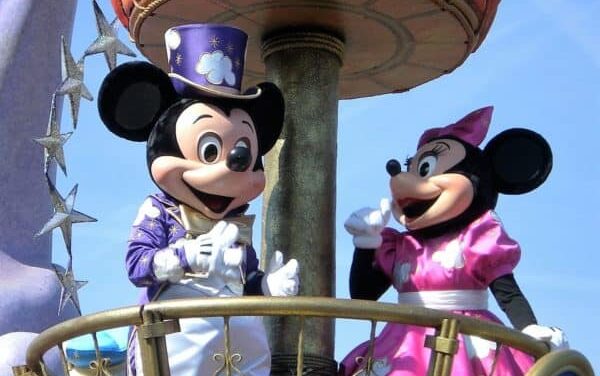Disney: DIS stock is a buy right now, this investor says

The stock remains well off its highs and just like those park-goers waiting two hours in line to ride the Slinky Dog Dash, owning media and entertainment company Disney (Real Time DIS Stock Quote, Charts, News, Analysts, Financials NYSE:DIS) takes a lot of patience these days. But investors are bound to be rewarded in the end, according to portfolio manager Chris Blumas, who thinks there’s too much going right for the Mouse House to be down for long.
“Disney definitely has been a disappointment,” said Blumas of Raymond James Investment Counsel, who spoke on BNN Bloomberg on Friday.
“They haven’t participated in the market rebound to the same extent but there’s massive underlying value in Disney,” he said.
DIS stock has been stuck around the $100 mark for almost a year now, which puts it at almost half the value of its $197 peak hit in early 2021. It’s also put the stock at much the same level it was for almost half a decade between 2015 and 2019.
There was a big pullback in DIS during the pandemic, which seems about right, as Disney’s theme parks were shut down across the board and then took a while to get back to full speed. Also, Disney made its big bet in 2019 by jumping into the streaming space, a field full of competition and with companies like Netflix and Amazon Prime pumping out loads of content.
But Disney appears to have made it through to the other side, both in terms of weathering the COVID storm and having established itself as a bona fide player in streaming with Disney+.
At the same time, questions remain. The company recently rehired former CEO Bob Iger to take back the helm, with Iger already having made his presence felt by announcing last month that Disney would be laying off about 7,000 employees in an effort to reduce corporate spending and create free cash flow. The company also said last month that it lost about 2.4 million Disney+ subscribers in its latest quarter due to an increase in monthly subscription fees.
But Blumas thinks Disney’s day in the sun will come soon enough and investors savvy enough to pick up the stock at today’s levels will be happy they did.
“There has been some activist pressure on Disney just in terms of optimizing their assets and boosting profitability. And in Bob Iger they reappointed their old CEO and announced pretty significant cost cuts in an attempt to boost profitability,” Blumas said.
“I think this is one you just have to be patient with,” he said. “[Disney] has the most hidden value of any of the names in my coverage universe. It’s another one I wouldn’t give up on and would be willing to buy this one today.”
The history of Disney (overview page)
The history of Disney dates back to 1923, when Walt Disney and his brother Roy O. Disney founded the Disney Brothers Studio in Hollywood, California. The studio began by producing short animated films featuring a character called Oswald the Lucky Rabbit, but when they lost the rights to Oswald, Walt created a new character: Mickey Mouse.
In 1928, the first Mickey Mouse cartoon, “Steamboat Willie,” premiered, and it was an immediate sensation. Mickey Mouse became a cultural icon, and the Disney studio went on to create a series of successful animated films throughout the 1930s and 1940s, including “Snow White and the Seven Dwarfs,” “Pinocchio,” “Fantasia,” and “Bambi.”
In the 1950s, Walt Disney turned his attention to television and launched “The Mickey Mouse Club” and “Disneyland,” a weekly television show that gave viewers a behind-the-scenes look at the making of Disney’s movies and theme park attractions.
The 1960s saw the opening of the first Disneyland theme park in Anaheim, California, and the release of Disney’s first live-action film, “Mary Poppins.” In the 1970s and 1980s, Disney continued to expand its theme park empire, opening Walt Disney World in Florida, Epcot Center, and Tokyo Disneyland.
In the 1990s, Disney experienced a new wave of success with the release of popular animated films such as “The Little Mermaid,” “Beauty and the Beast,” “Aladdin,” and “The Lion King.” The company also expanded its media empire with the acquisition of ABC, ESPN, and several other television and radio stations.
Today, Disney is one of the largest media conglomerates in the world, with holdings in film, television, theme parks, and more. Its beloved characters and stories continue to capture the hearts and imaginations of people around the globe.
Disney IPO
The Disney IPO, or initial public offering, occurred on November 12, 1957. Prior to this, the Walt Disney Company had been a privately held company founded by Walt Disney and his brother Roy O. Disney in 1923.
At the time of the IPO, Disney offered 155,000 shares of common stock at $13.88 per share. The offering was oversubscribed, meaning that there was more demand for the shares than there were shares available for purchase. As a result, the stock price quickly rose to over $40 per share on the first day of trading.
The success of the IPO allowed Disney to raise capital to invest in new projects, including the construction of Disneyland, which opened in 1955. It also provided an opportunity for investors to own a piece of one of the most beloved entertainment companies in the world.
Since the IPO, Disney has gone on to become one of the most successful and iconic media companies in history. Its portfolio includes beloved characters such as Mickey Mouse, Marvel superheroes, and Star Wars, as well as a vast array of successful movies, theme parks, television shows, and other entertainment properties.


